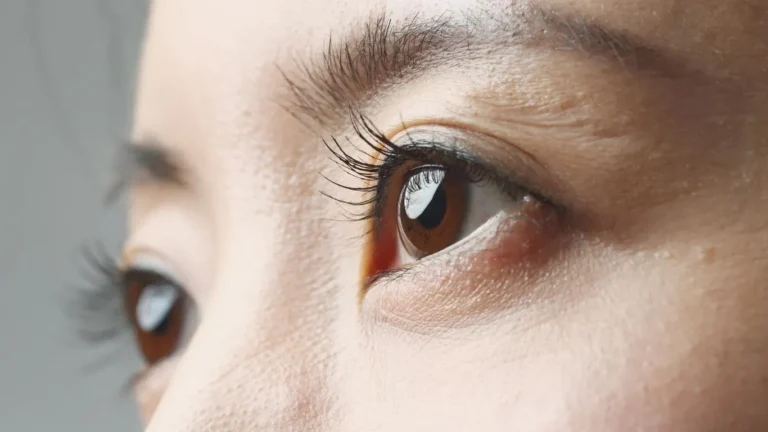Best Diets for Borderline Hypertension That Actually Work!
When it comes to managing blood pressure, the best diets for borderline hypertension can make a world of difference. I’ve seen it firsthand—patients who tweak their eating habits often experience significant improvements without immediately needing medication. If you’ve recently been told your blood pressure is creeping up but isn’t quite in the hypertension range, don’t panic. The right food choices can help keep things in check. Let’s talk about how diet plays a crucial role and which eating patterns truly work.
Why Diet Matters for Borderline Hypertension
Blood pressure isn’t just about genetics or stress—what you put on your plate daily has a direct impact. Over the years, I’ve had countless patients ask me, “Can diet really lower my blood pressure?” The answer? Absolutely!
Your blood vessels respond to everything you eat. Foods rich in potassium, magnesium, fiber, and healthy fats can help relax blood vessels and lower pressure. On the flip side, too much sodium, processed foods, and added sugars can spike blood pressure over time. That’s why choosing the right diet is one of the most effective (and natural) ways to prevent hypertension from escalating.
What to Look for in a Blood Pressure-Friendly Diet
Instead of focusing on single “magic” foods, it’s more effective to look at overall dietary patterns. Here are the key principles I recommend to patients:
- High in Potassium & Magnesium: Think bananas, avocados, leafy greens, and beans.
- Low in Sodium: Cut back on processed foods, canned soups, and salty snacks.
- Rich in Fiber: Whole grains, legumes, and fresh vegetables help regulate blood pressure.
- Heart-Healthy Fats: Olive oil, nuts, and fatty fish support cardiovascular health.
- Balanced Protein: Lean proteins like chicken, tofu, and fish are better choices than processed meats.
With these principles in mind, let’s dive into some of the best diets that align with them.
The DASH Diet: Gold Standard for Blood Pressure Control

If I had to pick one diet for borderline hypertension, it would be the DASH (Dietary Approaches to Stop Hypertension) diet. It’s been extensively researched and has consistently shown positive effects in lowering blood pressure.
Why the DASH Diet Works
DASH isn’t just another trendy diet—it was developed specifically to combat hypertension. It emphasizes:
- Plenty of Fruits & Vegetables: At least 4-5 servings each per day.
- Whole Grains: Swapping refined carbs for whole wheat, brown rice, and oats.
- Lean Proteins: Chicken, fish, beans, and nuts instead of red or processed meats.
- Low-Fat Dairy: Provides calcium, which helps regulate blood pressure.
- Minimal Sodium: Keeping daily intake below 2,300 mg (or ideally 1,500 mg for better results).
One of my patients, Sarah, struggled with creeping blood pressure for years. She wasn’t keen on taking medication, so we tailored a DASH-style meal plan for her. Within six months, her readings dropped from 135/85 to a much healthier 120/78—all thanks to simple food swaps!
Mediterranean Diet: Delicious & Heart-Healthy

If you love flavorful meals and want a sustainable approach, the Mediterranean diet is another top choice. It’s naturally rich in heart-healthy ingredients while keeping processed foods to a minimum.
Key Features of the Mediterranean Diet
Unlike strict diets, this one focuses on balance and moderation:
- Healthy Fats: Olive oil, nuts, and seeds instead of butter or margarine.
- Lots of Fresh Produce: Tomatoes, cucumbers, peppers, and leafy greens.
- Lean Proteins: Fish, legumes, and occasional poultry.
- Whole Grains: Brown rice, quinoa, and whole wheat bread.
- Red Wine (Optional): In moderation, it can offer heart benefits.
Many of my patients prefer this diet because it doesn’t feel restrictive. It allows for indulgences (hello, dark chocolate and red wine!) while keeping heart health a priority.
Low-Carb Diets: Are They Safe for Blood Pressure?

Low-carb diets like keto and paleo have gained popularity, but do they help with borderline hypertension? The answer isn’t black and white.
The Pros & Cons of Low-Carb Eating for Blood Pressure
Some studies suggest that reducing carbs can improve blood pressure by lowering insulin levels and promoting weight loss. However, extreme versions (like keto) may lead to:
- Dehydration & Electrolyte Imbalances: Losing too much sodium, potassium, and magnesium can be counterproductive.
- Increased Saturated Fat Intake: Some low-carb diets encourage excess consumption of red meat and dairy, which might not be ideal for heart health.
- Fiber Deficiency: Cutting carbs too drastically can mean missing out on whole grains and fiber-rich foods.
That said, a balanced, moderate low-carb diet—emphasizing healthy fats, lean proteins, and non-starchy veggies—can be an effective option for some people.
Plant-Based Diets: Can They Help Lower Blood Pressure?

Over the years, I’ve had many patients ask whether going vegetarian or vegan could help their blood pressure. The answer? Yes, but it depends on how you do it. A plant-based diet can be incredibly effective for lowering blood pressure—if it’s done right.
What Makes Plant-Based Eating So Effective?
The beauty of a well-planned plant-based diet is that it naturally cuts out many of the usual blood pressure culprits—processed meats, excessive sodium, and unhealthy fats. Instead, it focuses on:
- High Fiber Intake: Legumes, whole grains, and fresh produce all help support heart health.
- Lower Sodium Levels: Since plant-based diets avoid processed meats, there’s usually much less hidden salt.
- More Potassium & Magnesium: Leafy greens, bananas, sweet potatoes, and beans help balance blood pressure naturally.
But here’s the catch—just because a food is “plant-based” doesn’t automatically mean it’s good for you. I’ve seen some patients rely too much on processed vegan options, like mock meats and packaged snacks, which can be just as high in sodium and additives as regular junk food. The key is sticking to whole, unprocessed foods as much as possible.
Intermittent Fasting: A Secret Weapon for Blood Pressure?

Intermittent fasting (IF) has been a hot topic in recent years, but does it actually help with borderline hypertension? Based on research and what I’ve seen in my own patients, the answer is yes—but only if done correctly.
How Intermittent Fasting Impacts Blood Pressure
Fasting gives your body a break from constant digestion, allowing it to regulate insulin levels and reduce inflammation. Here’s how that translates to blood pressure benefits:
- Lower Insulin Resistance: High insulin levels can lead to fluid retention and increased blood pressure.
- Reduced Inflammation: Chronic inflammation can damage blood vessels, making hypertension worse.
- Potential Weight Loss: Carrying excess weight is a major risk factor for high blood pressure.
But here’s where things get tricky—some people do fasting the wrong way. Skipping meals but bingeing on salty, processed foods during eating windows? That’s not going to help your blood pressure. The best approach is pairing fasting with a balanced diet, like the Mediterranean or DASH diet, to get the full benefits.
Common Diet Mistakes That Raise Blood Pressure
Even with the best intentions, I’ve seen patients make some common mistakes that sabotage their progress. If you’re trying to keep your blood pressure in check, avoid these pitfalls:
1. Relying Too Much on “Low-Fat” Packaged Foods
Many so-called “healthy” low-fat foods (like flavored yogurts and granola bars) are packed with added sugars and sodium. Always check labels—sometimes the full-fat version is actually the better choice!
2. Overloading on High-Sodium “Healthy” Foods
Even healthy diets can be sneaky. Cottage cheese, canned beans, and even whole-grain breads can be surprisingly high in sodium. If you eat these often, rinse canned foods, choose low-sodium versions, and watch your total intake.
3. Not Drinking Enough Water
It sounds simple, but dehydration can cause blood pressure spikes. Many people mistake thirst for hunger and end up snacking instead of hydrating. Keep a water bottle handy and sip throughout the day.
4. Cutting Out Carbs Too Aggressively
Low-carb diets can help some people, but going too extreme can cause electrolyte imbalances. If you’re reducing carbs, make sure to include potassium-rich foods like avocados and spinach to keep your blood pressure stable.
Final Thoughts
Finding the best diet for borderline hypertension isn’t about following the latest trend—it’s about creating a sustainable, heart-healthy lifestyle. Whether you lean toward DASH, Mediterranean, plant-based, or intermittent fasting, the key is consistency.
Over the years, I’ve seen patients transform their health just by making small, intentional changes to their diet. And the best part? They feel better, have more energy, and often avoid needing medication altogether. If you’re looking for a way to take control of your blood pressure, start with your plate—you might be surprised at just how powerful food can be.
Case Studies & Real-Life Examples

One of the most rewarding parts of my work is seeing real people take control of their health through simple dietary changes. Let me share a couple of cases that highlight just how powerful the right diet can be for managing borderline hypertension.
Case 1: John’s Mediterranean Diet Success
John, a 52-year-old accountant, came to me after a routine check-up showed his blood pressure was creeping up—hovering around 138/85. He was hesitant about medication and wanted a natural approach first. Since he enjoyed cooking and loved Mediterranean flavors, I suggested the Mediterranean diet.
Within three months of consistently following the diet—focusing on olive oil, fresh vegetables, lean proteins, and whole grains—his blood pressure dropped to 125/80. Even better? He reported having more energy, better digestion, and improved sleep.
Case 2: Lisa’s DASH Diet Transformation
Lisa, a 45-year-old teacher

Dr. Gwenna Aazee is a board-certified Internal Medicine Physician with a special focus on hypertension management, chronic disease prevention, and patient education. With years of experience in both clinical practice and medical writing, she’s passionate about turning evidence-based medicine into accessible, actionable advice. Through her work at Healthusias.com, Dr. Aazee empowers readers to take charge of their health with confidence and clarity. Off the clock, she enjoys deep dives into nutrition research, long walks with her rescue pup, and simplifying medical jargon one article at a time.






